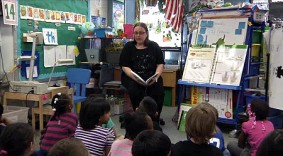In response to a growin g desire to understand what works in STEM education Congress requested that the National Science Foundation fund the National Research Council’s (NRC) Board on Science Education and Board on Testing and Assessment to identify the evidence on successful STEM education in K-12 schools in terms of teaching, instructional resources, and education system strategies, and make recommendations. The NRC’s produced a report, Successful K-12 STEM Education: Identifying Effective Approaches in Science Technology, Engineering, and Mathematics, that resulted from the work of an expert committee, a series of commissioned papers, and a review of research on STEM-focused schools, effective STEM practices, and effective schooling.
g desire to understand what works in STEM education Congress requested that the National Science Foundation fund the National Research Council’s (NRC) Board on Science Education and Board on Testing and Assessment to identify the evidence on successful STEM education in K-12 schools in terms of teaching, instructional resources, and education system strategies, and make recommendations. The NRC’s produced a report, Successful K-12 STEM Education: Identifying Effective Approaches in Science Technology, Engineering, and Mathematics, that resulted from the work of an expert committee, a series of commissioned papers, and a review of research on STEM-focused schools, effective STEM practices, and effective schooling.
Regardless of the method of instruction the report makes the following recommendations to increase student interest and motivation in STEM:
- Relate science to students’ daily lives
- Employ hands-on tasks and group activities
- Use authentic learning activities
- Incorporate novelty and student decision-making into classroom lessons
- Ensure that STEM curricula focus on the most important topics in each discipline
There are a variety of instructional models for STEM subjects although there is little substantial research to support the outcomes of these methods. In terms of instructional models three models in particular have risen to the forefront in the past decade as promising instructional methods in STEM: inquiry-based, problem-based and project-based learning. You can find more information about each of these here:
Inquiry based learning: http://www.nsta.org/about/positions/inquiry.aspx
Problem-based learning: http://en.wikipedia.org/wiki/Problem-based_learning
Project-based learning: http://bie.org/